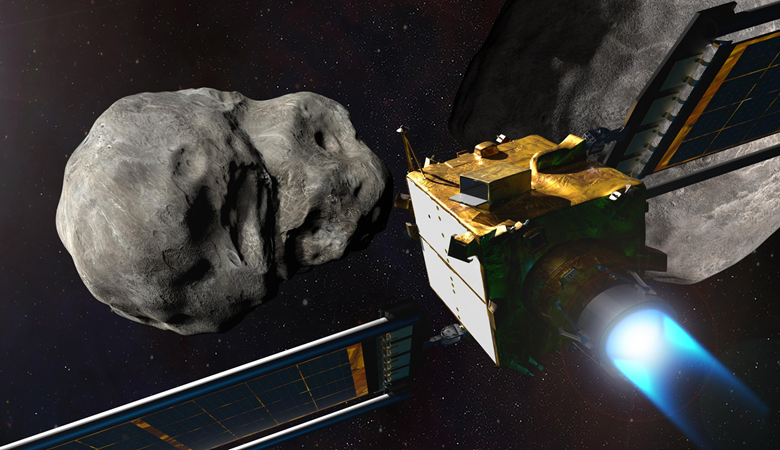NASA’s DART Mission Altered Asteroid Moon’s Shape and Orbit: Key Findings Revealed

News Mania Desk/Agnibeena Ghosh/25th August 2024
A recent study has unveiled that NASA’s Double Asteroid Redirection Test (DART) mission not only disrupted the orbit of the asteroid moon Dimorphos but also significantly changed its shape. Conducted in 2022, the DART mission aimed to test whether a spacecraft could effectively alter the trajectory of a celestial object, an essential step in planetary defense.
Two years ago, NASA’s DART spacecraft deliberately crashed into Dimorphos, a small moon orbiting the larger asteroid Didymos. The mission’s initial goal was to observe a minor deviation in Dimorphos’ path to assess the feasibility of asteroid redirection. However, new research published in the Planetary Science Journal reveals that the impact had a far more profound effect than anticipated.
According to the study, the collision not only shifted Dimorphos from its original orbit but also transformed its shape from a hamburger-like form into one resembling a football. Dr. Derek Richardson, a researcher involved in the study, noted that this significant alteration challenges previous theories about the formation and behavior of asteroid moons. Previously, it was believed that these moons would gradually elongate, with their main axis always directed towards their parent asteroid.
Contrary to this notion, the new findings suggest that Dimorphos contracted and became more compressed as a result of the impact. Richardson explained that this unexpected change in shape could have implications for how Dimorphos interacts with Didymos, altering its gravitational dynamics.
In addition to the shape transformation, the DART mission has caused Dimorphos to exhibit erratic rotational behavior. The asteroid moon has been reported to be “tumbling” through space, rotating unpredictably and failing to present a consistent face to Didymos. This unusual movement further complicates the understanding of how asteroid moons behave after being impacted.
The insights gained from the DART mission are valuable for future planetary defense strategies. Understanding how an asteroid moon can be redirected and how impacts affect its shape and movement is crucial for developing methods to protect Earth from potential asteroid or comet threats. As Dr. Richardson highlighted, the DART mission has provided important data on complex gravitational physics that cannot be replicated in a laboratory setting.
The study emphasizes that there remains a realistic possibility of an asteroid or comet approaching Earth and posing a danger. The DART mission has contributed to building an additional line of defense against such external threats, enhancing humanity’s preparedness for potential future impacts.
In summary, NASA’s DART mission has yielded groundbreaking results, demonstrating that a collision can both shift an asteroid moon’s orbit and alter its physical characteristics. These findings advance scientific understanding of asteroid dynamics and improve strategies for planetary defense, reinforcing the importance of continued research and preparedness for space threats.






